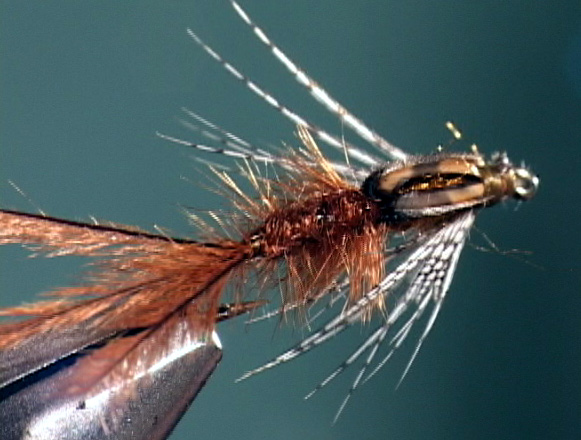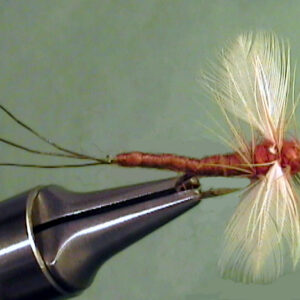Hook Size: 10/12
highly oxygenated water. Most often they are found in medium to fast flowing, freestone
streams. After the nymphs migrate to the banks of the stream, this swimmer nymphs crawl
out of the water on rocks and logs.Nymphs are quick and move fast when they migrate to the shallow water. They act a lot
like minnows and other small fish. They are difficult to catch in regular kick nets and you
want catch any of them just by picking up rocks from the streams and looking at the
bottoms of them. They will escape as soon as you try to lift the rocks, if not sooner than
that.
One key to determining where to fish the nymph imitation is where you find shucks along
the banks. That indicates they are hatching. The duns are difficult to find during the
daylight hours because they fly off into the trees and molt into spinners.
Presentation:
Imitations of the nymph should be fished in pockets near the bank and behind rocks,
boulders and logs. The nymphs want hold directly in fast current, rather the water
immediate adjacent to the fast water such as pockets. They will also congregate in flats
and the heads, edges and tail ends of pools where the current isn’t strong, yet there’s
plenty of oxygen.
You should allow the Perfect Fly Slate Drake Nymph to drift naturally or dead drift. The fly
has a tremendous amount of build-in action or movement. Just a slight amount of current
will make the fly appear as if it’s alive and breathing.
You can add a short erratic stripping motion to the fly to imitate the natural reaction of the
Slate Drake nymphs trying to escape a predator. This will sometimes trigger a strike from
a trout. In this case, I would not add any weight or if so, very little.
The “down and across” presentation works best in the shallow water that the nymphs
crawl out of the water to hatch from. In this case you should use the stripping action to
imitate the motions made by the nymph.
During the other times when no hatch is occurring, you should weight the nymph down to
keep in on or near the bottom in the deeper water. The amount of weight depends on the
water depth and swiftness. In this case I would suggest up or up and across
presentations. You can also present the fly on the swing keeping the rod high in the air
and staying in contact with the fly. This is best done in the runs and current seams along
the pockets behind boulders.
When hatching, these nymphs can often be found in very shallow water so don’t be afraid
to fish the shallow water areas adjacent to the deeper water.

